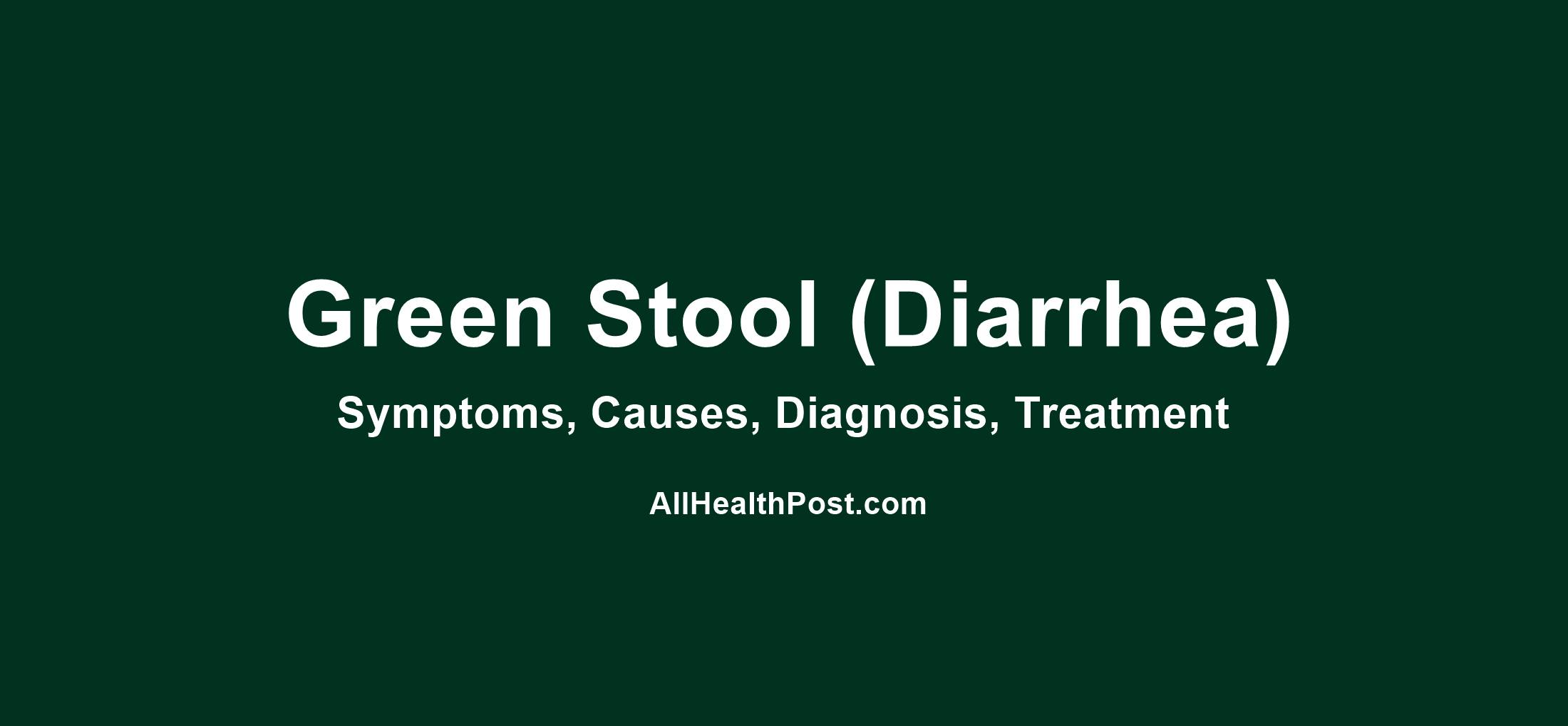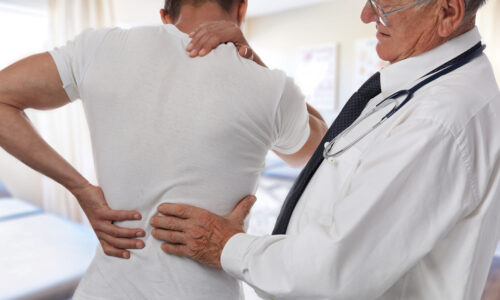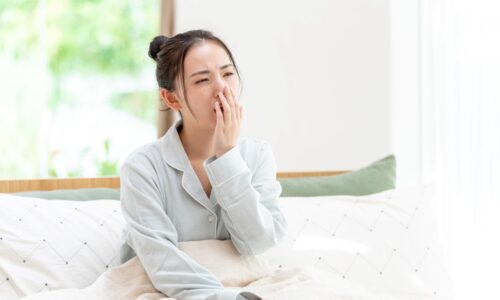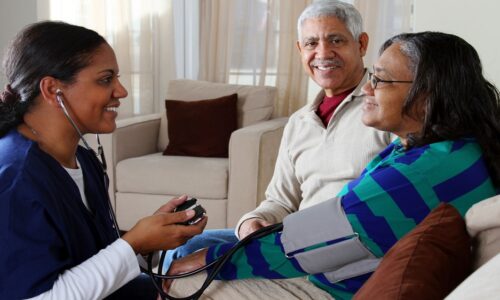It is normal for human stool to be brown in shade. However, intestinal problems, food, and other medical conditions can affect a change in color as well as the firmness of stool. As food travels down the gastrointestinal tract, it is acted upon by various enzymes and gastric juices that go on to alter its chemical composition. Bile, a digestive fluid produced in the liver plays an important role in determining the color of the stool. This article discusses the various causes of green diarrhea, its symptoms, and treatment.

Topics Covered
What is Green Stool?
If your stool turns watery and green in color, it is known as green diarrhea. In some cases, the condition is triggered by temporary factors such as food. It heals all by itself after just a few days and is nothing serious to worry about. However, you should be careful if the condition does not go away even after 3 to 4 days. Green stool is quite common, especially in the USA. In fact, almost every individual experiences it at least 4 times every year. However, it starts getting more frequent, it could be an indication of some underlying health problems. In such cases, it is important to get medical attention before the condition gets complicated.
What Causes Green Stool?
Green diarrhea is either caused due to harmless factors such as temporary changes in the diet or routine illness. Some of the harmless causes of green diarrhea include:
1. Consumption of Green Foods
Eating a lot of green foods such as leafy green vegetables can increase the amount of chlorophyll supplied to the body. This can cause the stool to turn green in color. Eating foods that have been green food coloring added to them can also lead to the same.
2. Eating Purple Food
Purple food coloring such as those used in gelatin, kool-aid and popsicles can also cause the stool to turn green in color.
3. Iron-Rich Food
Consumptions of foods rich in iron can put added stress on the digestive system. It can result in constipation, bloating and add a green tinge to the stool. The same can also happen when a person is taking iron supplements.
Green Diarrhea Caused by Infection
1. Salmonella Infection
Salmonella is a type of bacteria that enter the body through contaminated food items. It can cause a disruption in the functioning of the digestive system and cause the stool to turn green in color. When the condition has been caused due to salmonella infection, the accompanying symptoms include
- Nausea and vomiting
- An increase in the body temperature
- Abdominal pain
- Headaches and muscular cramps
- Bloody stool
2. Giardiasis
Giardiasis is caused due to a parasite is known as Giardia lamblia. It enters the body through contaminated water. It is common for a person to catch the parasite after camping, hiking or swimming in rivers and lakes. When the body is infected with the parasite, the normal process of fat absorption is disturbed. As a result, the stool turns floaty, slimy and green in color. Giardiasis is also one of the most common causes of green diarrhea. The condition is accompanied by the following symptoms.
- Dehydration
- Gas formation
- Bloating
- Abdominal pain
- Mild fever
- Nausea and vomiting
- Reduced appetite
Other Causes of Green Diarrhea(Stool)
1. Nervous Issues
When the body is under stress, it leads to an abnormal functioning of the nervous system. The contents of the gastrointestinal tract are quickly released. Due to this, there is less time for the food to get digested and absorbed. As it contains a lot of bile, the stool appears to be green in color.
2. Antibiotics
If antibiotics are used in excess, it can result in the colon getting inflamed. The condition is also known as colitis. This affects the growth of healthy bacteria in the gut, thereby leading to green diarrhea.
3. Gastrointestinal Conditions
Various gastrointestinal conditions such as ulcerative colitis, Chron’s disease, irritable bowel syndrome or excessive use of laxatives can also result in green diarrhea.
4. Damaged Anus
If the lining of the anus has been damaged, the person will experience severe pain during defecation. At the same time, the stool can also turn red to green in color.
5. Consumption of Laxatives
When you consume laxatives, the food moves through the intestines quite rapidly as a result of which the stool appears to be green in color. Since tea and coffee can also act as a laxative, the same effect can be seen with the consumption of these beverages.
6. Gallbladder Surgery
When the gallbladder is removed from the body, there is no facility for the storage of bile. As a result of this, too much bile is passed out during defecation. Therefore, the green colored stool is also observed after a gallbladder surgery. At the same times, the person may also suffer from chronic diarrhea.
7. Food Poisoning
Consumption of food that has been contaminated by toxins and bacteria can lead also lead to green diarrhea accompanied by nausea and vomiting.
Check: Food Poisoning Causes & Symptoms
8. Lactose intolerance
Lactose intolerance is a condition in which the body fails to digest lactose or the sugar present in dairy products. This happens due to the absence of the enzyme lactase in the body. When a lactose intolerant person consumes dairy products, it can lead to green diarrhea accompanied by other symptoms such as gas, cramps, bloating and nausea.
9. Irritable Bowel Syndrome
Irritable bowel syndrome is a medical condition that affects the colon. The condition is very different from ulcerative colitis or Chron’s disease. Irritable Bowel Syndrome is not associated with an increased risk for cancer of degradation of the bowel tissues. However, it can give rise to green diarrhea accompanied by bloating, abdominal pain and constipation.
10. Bone Marrow Transplant
If a bone marrow transplant is rejected by the body, it can lead to an upset stomach together with the discoloration of the stool to a green color.
Symptoms of Green Diarrhea
- Weight loss
- Fever
- Abdominal pain
- Constipation or diarrhea
- Bleeding during defecation
- Presence of blood in vomit
- Dizziness
- Fatigue
- Morning sickness in pregnant women
- Tearing of the skin lining the anus
- Swelling of the blood vessels in and around the anus
- An urge to defecate frequently even when the bowel is empty
- Itchiness in the anus
- Development of an extra channel between the bowel and the anus
- Bloating
- Gas
- Dehydration
- Distention of the abdomen
Should you be Worried if you have Green Stool?
If it is only a once in a while occurrence, there is absolutely nothing to worry about having a green stool. In most cases, there are explainable reasons such as excessive consumption of leafy greens, algae, and chlorophyll. In these cases, having green stool is absolutely fine. Even alcohol, nicotine and spicy foods can cause the stool to turn green in color. The only time you should be worried is if it continues for several days in a row.
It is also possible to have green stool even when you have been eating perfectly normal. If this happens, then it is definitely a sign of some medical problem. As food passes down the intestine, it gets mixed with bile, which is green in color. As it passes further through the digestive tract, it turns dark brown in color. However, if the bowel movements are rapid, there isn’t enough time for the pigments in the bile to get broken down. As a result, the stool can appear green in color.
When Should You Seek Medical Help?
Green stool could be a result of dietary choices and supplements. However, sometimes, it could also be an indication of some dangerous food-borne diseases and medical disorders present in the body. If it continues for a period of more than two days, it could be an indication of the following:
- Nervous issues arising out of anxiety and stress
- Severe dehydration
- Infection from parasites
- Food poisoning due to salmonella and E.Coli
- Malnutrition
- Malabsorption of food in the intestine
- Colitis arising from antibiotics
- Irritable bowel syndrome
Green stool may be a matter of concern if it starts occurring within frequent intervals, especially when it is accompanied by other symptoms such as fevers and chills, stomach pain, nausea, vomiting, indigestion, rectal pain, and fatigue. The smell and consistency of the feces could also help in indicating the state of your health. So, if you notice any abnormal changes, it is best to consult the doctor as soon as possible.
Diagnosis of Green Diarrhea
The diagnosis often involves the examination of the stool and blood tests. A comprehensive study is done in order to figure out the main causative factor. When proper diagnosis has been made, the doctors will give out a prescription for the required medicines and also recommended the necessary changes that are to be made to the diet.
How to Treat Green Diarrhea?
A Healthy Amount of Exercises:
Most often, green diarrhea is an indication that the body has not been functioning properly. So the best way to bring your health back to its track is by getting a healthy amount of exercise on a daily basis. This will help in promoting the health of the digestive system, increase the rate of metabolism and help the body in getting rid of toxic substances.
Stopping the Consumption of Processed Foods and Canned Beverages:
processed foods and canned beverages have a lot of artificial flavors, sweeteners, colors and preservatives. This may disrupt the functioning of the digestive system and also lower immunity. Therefore, it is best to stay away from these items as much as possible.
Drinking Adequate Amount of Water:
drinking lots of water can help in enhancing digestion and proper elimination of waste matter from the body. It also ensures that the hormones are well balanced and working in an accurate manner.
Diet:
sticking to a healthy balanced diet makes sure that the body is supplied with all the vital nutrients, thereby promoting better health. For better bowel movement and healthier stool, it is also important for the diet to be rich in healthy fiber and roughage.
Avoiding Artificial Colors:
artificial coloring can make even the common food items look interesting and palatable. However, they are not very great when it comes to your digestive health. It is very common to have a green stool after consuming food that has green or purple color added to them. Therefore, it is advisable to stay away from foods that contain artificial colors for a speedy recovery from green diarrhea.
Proper Sleep:
sleep is one of the most important things for the body. At least 6 to 7 hours of sleep is a must for all. It keeps the body in good health and also ensures that the food is digested properly.
Lowering Stress:
stress and anxiety can have very serious negative impacts on the body. It increases the bowel movement, thereby giving rise to an urge to urinate and defecate more frequently. As a result, you can suffer from digestive problems and abnormal stool. Trying remedies such as yoga, meditation and aromatherapy can help in lowering the stress and relieving green diarrhea.
Cultivating Healthy Habits:
Practicing healthy habits such as washing hands before eating, maintaining a clean and hygienic living space and avoiding fast food can be helpful in the prevention and treatment of green diarrhea.
Also Read: Explosive Diarrhea Causes, Symptoms & Treatment
Green Stool in Infants and Toddlers
The stool passed out by a newborn is dark olive green in color. The technical term used for this is meconium. This is due to the food material that was ingested by the baby while still in the womb. As compared to adults, infants and toddlers have a very sensitive digestive system; it is quite common for them to have a green colored stool. Furthermore, infants do not eat solid food. The liquid food and milk that is fed to them pass down the digestive tract quite rapidly, which is another reason why the stool has a greenish tinge to it.
Another reason why toddlers can have green stool is due to the consumption of candies and sweet treats that have a lot of deep food coloring added to them. However, this does not lead to major consequences. However, it is a matter of concern if the green stool is accompanied by
- Slight acidity
- Mucous discharges in the feces
- Abdominal pain
- Reduced appetite
- Bleeding during defecation
- Fever
- Weight loss
- Constipation or watery stool
- Weakness
Green Stool During Pregnancy
It is also quite common for the pregnant women to have green stool. Oftentimes, it is accompanied by morning sickness, nausea, and vomiting. There are a number of factors leading up to this, including IBD, IBS, antibiotics, prenatal vitamins, diet changes and reduction in the time for colon transit. However, if the stool appears to be green in color even when you have not increased the intake of green vegetables or used medications, it is important to consult a doctor. It may not be downright dangerous. However, it is always better to take the necessary precautions. To avoid green stool, pregnant women should take a lot of fluids and prevent foods and drink with added preservatives.
Can Green Stool Lead to Complications?
Although green stool is not always a reason to worry about, it could be an indication of various abnormalities such as complications in the digestive system, malabsorption of food from the digestive tract, malnutrition, dehydration and reduced level of potassium in the body. If the condition is not justified by dietary changes, it is an indication that there are other serious medical conditions present in the body. In such cases, it is best to consult the doctor before it leads to any further complications.
Conclusion
Sometimes, green stool is directly related to the consumptions of green foods. In such cases, the condition goes away without any extra steps to treatment. Keeping a track of the food that you have been eating can help you identify the severity of the condition. However, if you are suffering from green diarrhea, where the stool is green and watery, as well as accompanied by a foul smell, it could be due to other underlying health conditions. In such cases, it is important to have the condition examined by a physician.
Posts You May Like:




